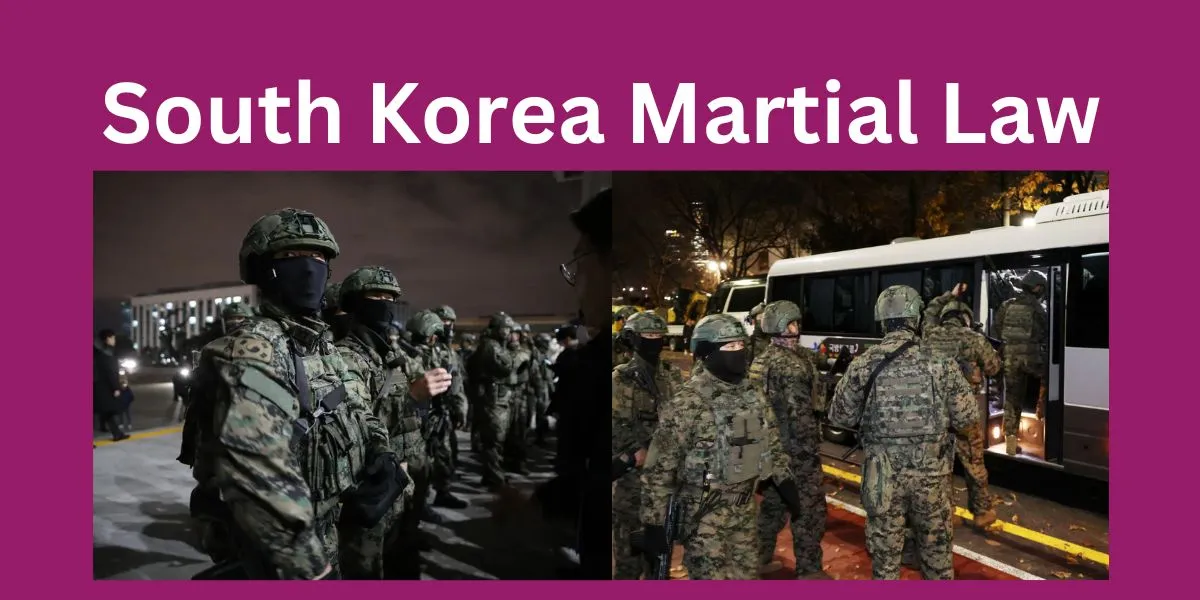South Korea is a nation with a rich history, vibrant culture, and a dynamic political past. Among the chapters of its story, the concept of martial law stands out as a significant yet complex topic. If you’ve ever wondered what martial law is, how it played out in South Korea, and why it matters today, you’re in the right place. Let’s break it all down.
What Is Martial Law?
A Quick Definition
Martial law refers to the temporary imposition of direct military control over civilian governance. It’s typically enforced during emergencies like wars, uprisings, or major crises.
What Happens Under Martial Law?
Under martial law, the military takes charge, often suspending ordinary laws and civil rights. Courts may be replaced with military tribunals, and authorities might restrict freedoms like speech or assembly.
A Brief History of Martial Law in South Korea
Setting the Stage
South Korea’s turbulent 20th-century history was marked by war, political strife, and democratization efforts. Martial law was frequently used as a tool by leaders to maintain control during unstable times.
Post-Korean War Challenges
After the Korean War (1950–1953), South Korea faced numerous challenges, including rebuilding and dealing with internal and external threats. Martial law became a method to tackle these issues.
The 1961 Coup
In 1961, General Park Chung-hee led a military coup that placed South Korea under martial law. The move was justified as a way to stabilize the nation and promote economic growth. Park’s era saw rapid modernization, but at the cost of political freedoms.
Key Moments of Martial Law in South Korea
The Gwangju Uprising (1980)
Perhaps the most infamous period of martial law occurred during the Gwangju Uprising.
What Sparked the Uprising?
The assassination of President Park Chung-hee in 1979 created a power vacuum. General Chun Doo-hwan seized control, extending martial law nationwide. This move angered pro-democracy activists, leading to protests in Gwangju.
The Government’s Brutal Response
The military’s crackdown on protesters was severe, resulting in hundreds of deaths. The tragedy became a turning point in South Korea’s push for democracy.
Transition to Democracy
South Korea’s martial law episodes didn’t last forever. By the late 1980s, growing public resistance and international pressure pushed the nation toward democratic reforms.
Why Did Martial Law Happen in South Korea?
Threats to Stability
South Korea’s position near communist North Korea, coupled with internal unrest, made stability a constant concern. Martial law was often invoked to address perceived threats.
Consolidating Power
Military leaders also used martial law to consolidate power, suppress dissent, and control the political narrative.
The Impacts of Martial Law
On Civil Liberties
Martial law in South Korea often resulted in curtailed freedoms, including restricted press, limited protests, and widespread surveillance.
Economic Consequences
Interestingly, some periods of martial law coincided with rapid economic development. For example, during Park Chung-hee’s leadership, South Korea transformed into an industrial powerhouse.
Societal Legacy
The trauma of events like the Gwangju Uprising left deep scars. However, they also inspired movements for justice, accountability, and democracy.
Lessons Learned from South Korea’s Martial Law Era
Democracy Prevails
South Korea’s transition from a militarized state to a thriving democracy shows the resilience of its people.
The Role of Collective Action
From students to workers, South Koreans played a key role in opposing martial law. Their efforts remind us that change often starts with collective action.
How Martial Law Is Remembered Today
Memorials and Museums
Places like the 5.18 Memorial in Gwangju honor the victims of martial law and the fight for democracy.
Cultural Reflections
Films, books, and art often depict martial law’s impact, keeping its lessons alive for future generations.
Does Martial Law Still Exist in South Korea?
Current Safeguards
Today, South Korea is a vibrant democracy with legal protections against authoritarianism. While martial law is technically still possible, it’s highly unlikely given the nation’s political and legal framework.
Final Thoughts: Why This Matters
South Korea’s history with martial law is a powerful reminder of the struggles nations face on the road to democracy. It shows the importance of resilience, collective action, and the enduring human spirit.
FAQs
1. What is the Gwangju Uprising?
The Gwangju Uprising was a pro-democracy movement in 1980, where citizens protested against martial law. The military’s brutal response led to many deaths, but it eventually fueled South Korea’s democratic transition.
2. How many times was martial law declared in South Korea?
Martial law was declared multiple times, particularly during the Korean War, the 1961 coup, and the late 1970s and early 1980s.
3. Is martial law still possible in South Korea?
While technically possible, South Korea’s democratic safeguards make martial law highly unlikely today.
4. What are the key lessons from South Korea’s martial law era?
The importance of democracy, the power of collective action, and the resilience of people facing oppression are the key takeaways.
5. How is martial law remembered in South Korea?
Through memorials, museums, and cultural works, South Korea honors those who fought for democracy and ensures the lessons of martial law are not forgotten.










